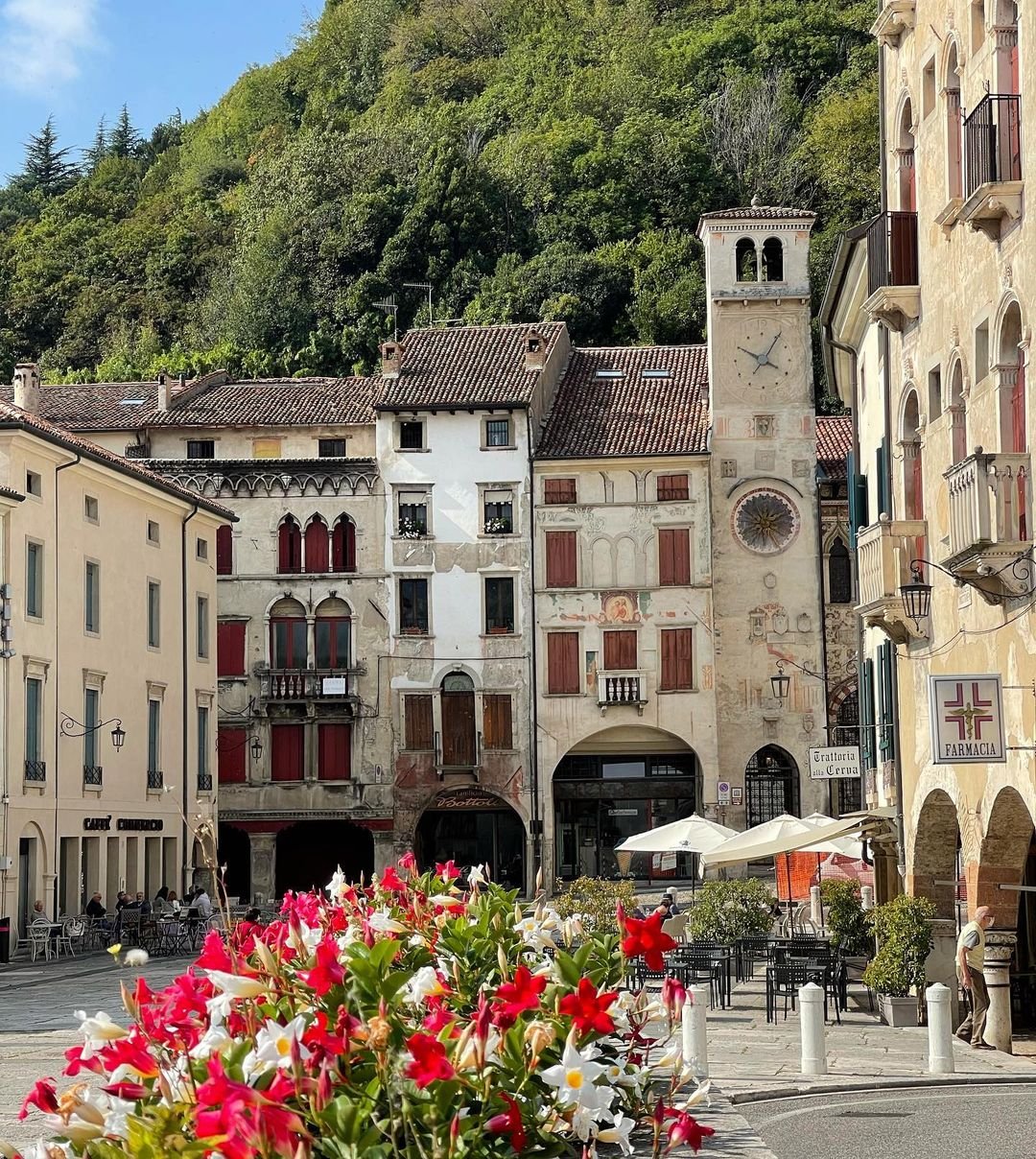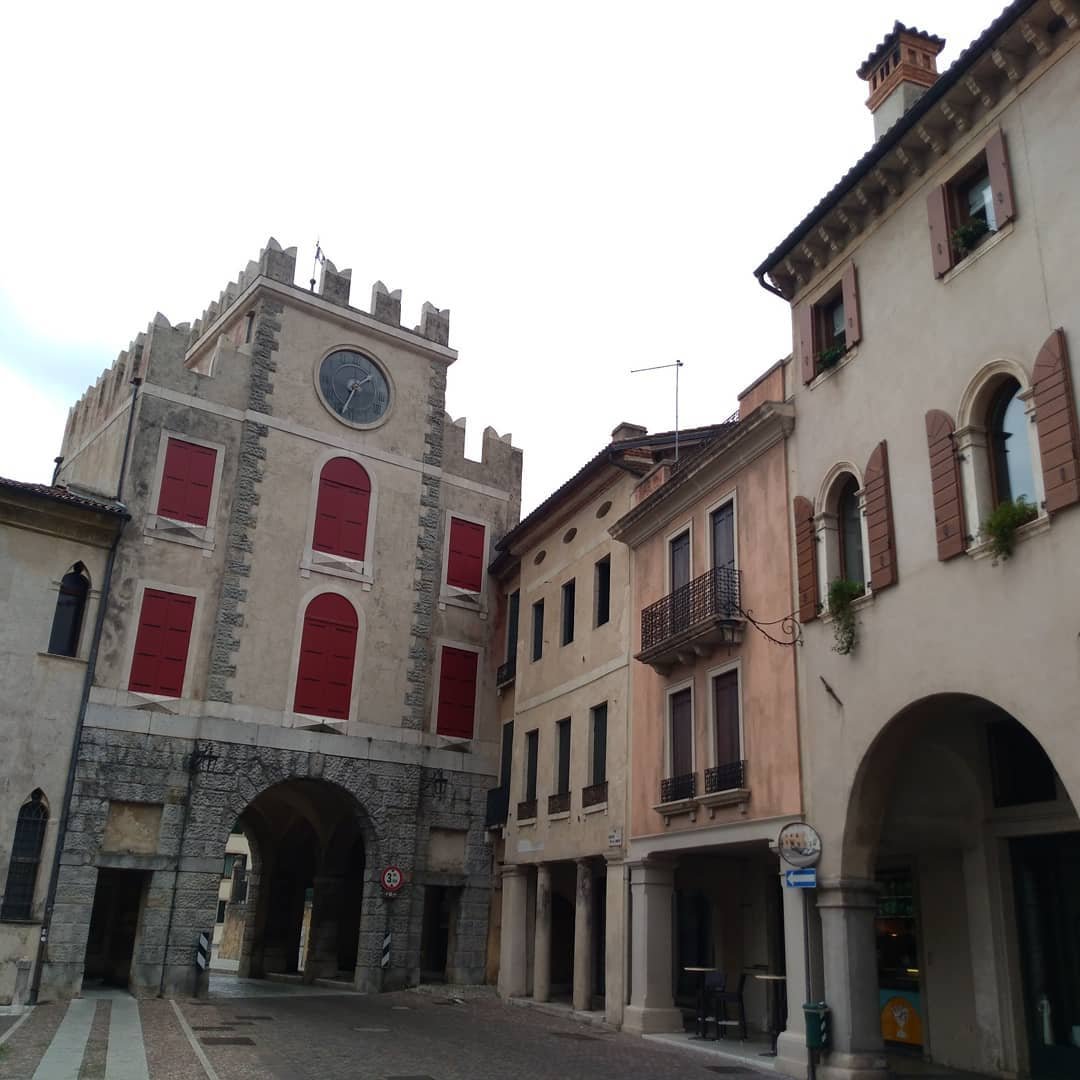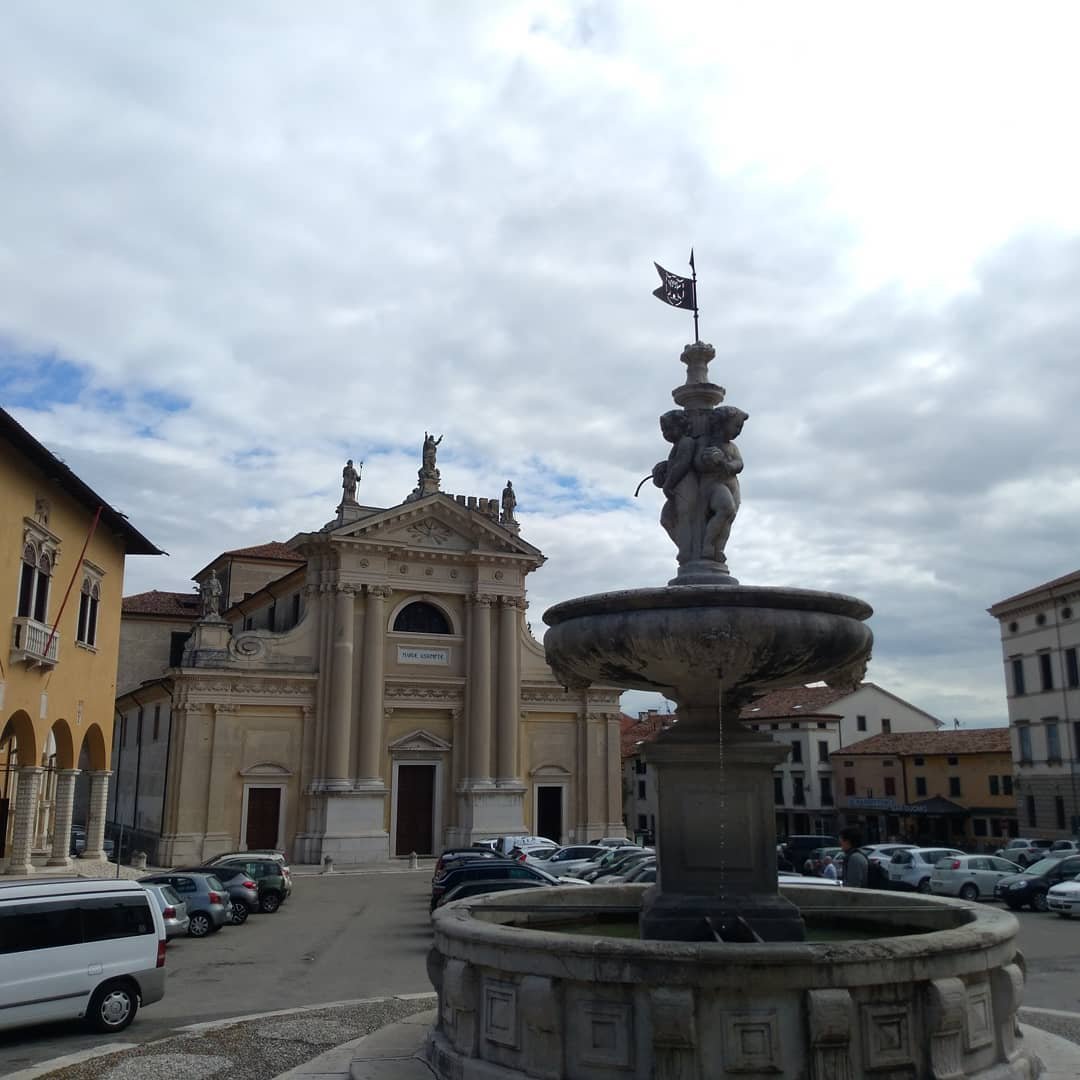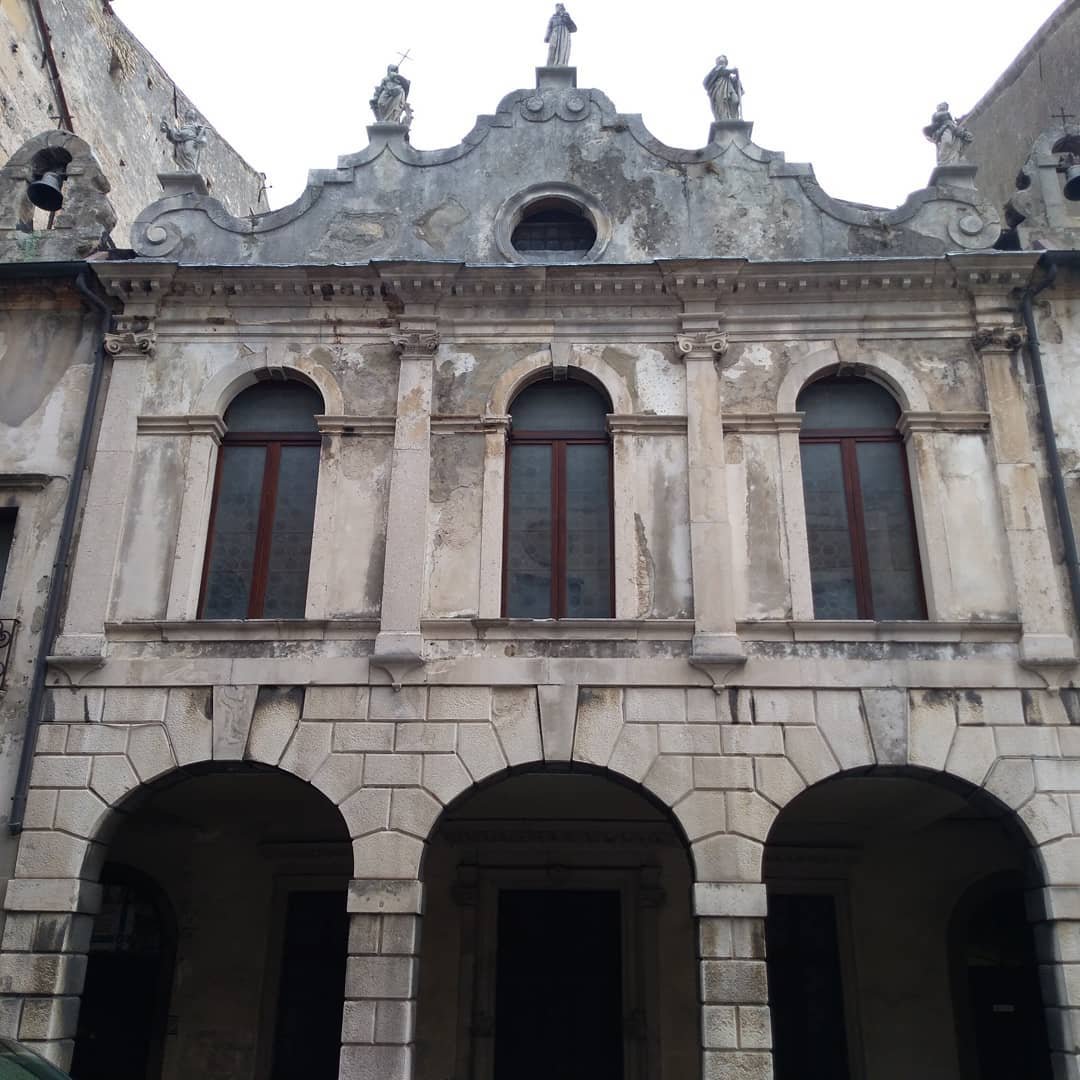
Ieri sono stata in una cittadina che è a metà tra Venezia e Cortina siamo in una cittadina dalla spiccata bipolarità si chiama Vittorio Veneto!!
La città così come la conosciamo con il nome che conosciamo è relativamente moderna, risale al 1866 per unire due cittadine Ceneda e Serravalle che formarono una città chiamata Vittorio per onore di Vittorio Emanuele II, l'appellativo Veneto venne aggiunto soltanto dopo la prima guerra mondiale del resto fu qui che si risolse la battaglia fra l'esercito Italiano e quello Austriaco dopo la disfatta di Caporetto.
Yesterday I was in a town halfway between Venice and Cortina we are in a town with a marked bipolarity called Vittorio Veneto !! The city as we know it by the name we know is relatively modern, it dates back to 1866 to unite two towns Ceneda and Serravalle which formed a city called Vittorio in honor of Vittorio Emanuele II, the name Veneto was added only after the First World War after all, it was here that the battle between the Italian and Austrian armies was resolved after the defeat of Caporetto.

Ceneda è diventato uno dei Quartieri di Vittorio Veneto, la sua origine è molto antica e il nome suggerirebbe un origine celtica poiché è certo che fu un insediamento Romano molto, molto importante legato con Serravalle alle sorti della vicina Oderzo.
Ceneda has become one of the districts of Vittorio Veneto, its origin is very ancient and the name would suggest a Celtic origin as it is certain that it was a very, very important Roman settlement linked with Serravalle to the fate of nearby Oderzo.

Il duomo di Santa Maria Assunta e San Tiziano vescovo è un edificio religioso dalla storia millenaria perchè esisteva già un edificio religioso in questo posto, prima dell'arrivo del corpo del Santo intorno al VII secolo, l'edificio fu poi ricostruito e sistemato più volte e prese questa forma circa 70 anni fa, il campanile invece è costruito sulla base di un'antica Torre di difesa che risale alla fine del 1200.
The cathedral of Santa Maria Assunta and San Tiziano bishop is a religious building with a thousand-year history because there was already a religious building in this place, before the arrival of the saint's body around the seventh century, the building was then rebuilt and arranged several times and took this shape about 70 years ago, the bell tower is instead built on the basis of an ancient defense tower that dates back to the end of 1200.

Come ogni posto c'è sempre qualche leggenda che mi affascina,
nel 400 sul monte sopra Vittorio Veneto arrivò un re Visigoto che costruì un castello, ma era un Re molto cattivo e dittatore, ebbe una moglie che gli diede una figlia che fu allevata da una serva Cristiana e questo infastidì molto il Re che non era di religione Cristiana cosi la torturò e le tagliò la testa.
Li comparve il suo fantasma e la figlia divenne Santa Augusta,si creò un santuario nel1430 circa dopo varie apparizioni,anni dopo è stato costruito il Ristoro del Pellegrino che dovrebbe essere intorno al 1500 , è davvero difficile capire dove finisce la storia e dove inizia la leggenda,ma queste storie mi incuriosiscono parecchio.
Like every place there is always some legend that fascinates me, in 400 on the mountain above Vittorio Veneto a Visigoth king arrived who built a castle, but he was a very bad king and dictator, he had a wife who gave him a daughter who was raised by a Christian servant and this greatly annoyed the King who was not of Christian religion so he tortured her and cut off her head. Her ghost appeared there and her daughter became Santa Augusta, a sanctuary was created in about 1430 after various apparitions, years later the Ristoro del Pellegrino was built which should be around 1500, it is really difficult to understand where the story ends and where the legend, but these stories intrigue me a lot.
